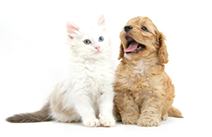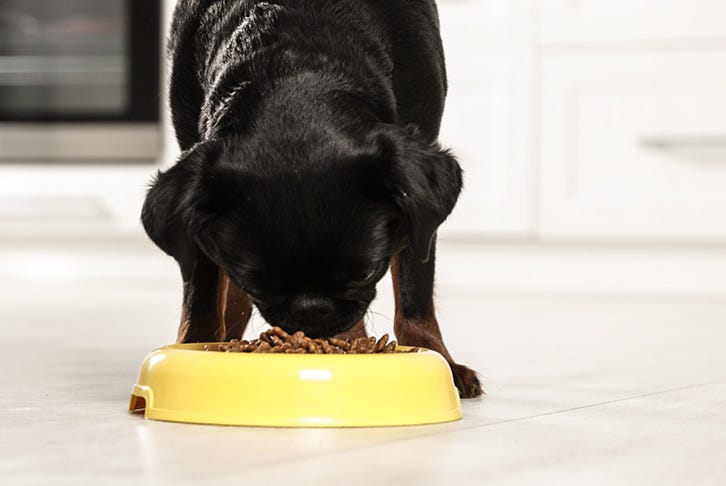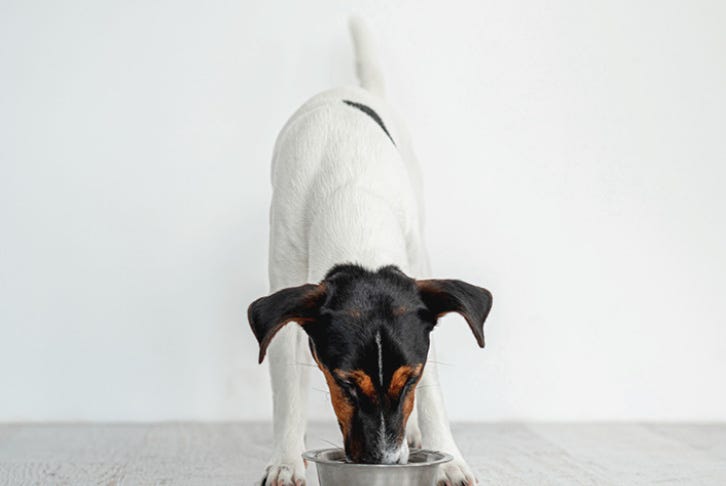How to transition your dog to a new food
Changing your dog’s diet is not something you can do overnight. The shift to a new food should be made slowly to avoid stomach upsets.
Here's our guide on how to transition your dog to a new food in a comfortable way for them.
If you’ve decided to make a change to your dog’s diet, whether it’s a different brand, a new balance between wet and dry food, or even shifting from puppy food to adult, or adult to senior pet food, it’s really important that you do so slowly. While we can happily eat a variety of foods in one day, our pets have very different digestive systems - where an abrupt change in diet can lead to digestive upsets. Therefore, gradually introducing the new food is the best way to avoid some of the issues that can occur with a change in diet.
Food transitioning over 7 days:

Once you’ve selected your dog’s new diet, we recommend a transition period, changing their old food to their new food over a 7-day period. This process involves mixing the two foods together until your dog is solely on the new diet.
For the first two days of the transition period, feed 75% old diet and 25% new diet. If your dog is fed multiple times a day, ensure this split occurs at each meal. For days three to four, split the diets 50:50 – 50% old food and 50% new food.
If at any time during the transition your dog begins to have a loose bowel movement, stop the transition and take a step back. This process doesn’t need to be finished within seven days if your pet’s stomach gets upset, so take your time and work to what your pet can handle.
If after day four your pet is looking good, eating the food willingly and has normal stools, then for days five and six feed 25% old food and 75% new food. Then finally, on day seven, feed 100% new food. Your dog is now fully transitioned onto their new diet.

Your dog's digestive health
Throughout the 7-day period, you should keep a close eye on your dog’s digestive health. If you notice any minor upsets, including diarrhoea or vomiting, you should stop the transition until this has settled. Contact your local Animates Vetcare clinic if you continue to see these symptoms.
You also need to make sure that you are not underfeeding or overfeeding you dog during the transition process. Ensure that you are paying close attention to the recommended quantities for your pet’s weight and size, as feeding too much can also lead to your pet gaining weight.
What if my dog doesn't like the new food?
If you follow the 7-day transition process, it’s most likely that your pet will quickly adapt to their new diet. But if you notice your pet avoiding their food, it may be more to do with what they are eating outside of their bowl. If your pet is receiving too many treats, they may start to avoid their main meals. It’s important that you avoid overfeeding them to ensure that they look forward to their daily meals to satisfy their hunger and keep them healthy.
If you’re thinking about changing your dog’s diet, check out our article ‘Why you should choose Superior Nutrition dog food’.
If you have any questions about feeding your dog, visit your local Animates store or Animates Vetcare clinic for pet nutrition tips and advice.










